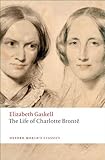
I think that Northumberland is one of the loveliest parts of the United Kingdom, with the Cheviot Hills and in particular the beautiful golden sands along the coast of the North Sea. It also has a large share of castles. Since we moved here we’ve visited all of the coastal castles, except that is the ruins of the castle at Dunstanburgh. It’s a spectacular ruin standing alone on the coast on an isolated headland between Embleton and Craster, looking out over the North Sea.
Last Tuesday we decided it was time for us to go there. It was a lovely hot, sunny day and we walked from the car park down the road to the little village and harbour at Craster, well known for its kippers.
From there it’s about a mile and a half walk northwards along the coast to the castle, which is owned by the National Trust (NH) and managed by English Heritage(EH). But we never actually got to the castle, because the heat defeated us and my knee, which has been a problem for a few months now, became painful so we only walked about halfway there, then turned back. I took a few photos zooming in as close as I could:
Thomas, Earl of Lancaster began building Dunstanburgh Castle in 1313. He was the wealthiest nobleman in England at the time and later took part in the barons’ rebellion against Edward II, resulting in his execution in 1322. John of Gaunt modernised it in the 1380s and later during the Wars of the Roses it became a Lancastrian stronghold, finally falling into ruin in the 16th century.
We will go there again to see more. At least we enjoyed the coastal walk and the view of the castle, despite the heat. And as always I was trying to visualise what it must have been like when it was new and how it had changed over the centuries, thinking of the battles that it had seen, of all the people who had lived and died there.





 I now intend to read more of Charlotte Bronte’s novels and Mrs Gaskell’s biography of her friend,
I now intend to read more of Charlotte Bronte’s novels and Mrs Gaskell’s biography of her friend, 






















